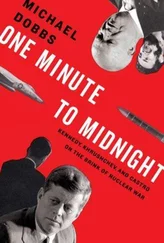FROM THE German point of view, the only glimmer of light from the whole affair was the havoc submarine U-202 inflicted along the eastern seaboard following its miraculous escape from Long Island. 35But even that was marred by controversy.
In the early morning hours of Monday, June 22—nine days after landing the saboteurs on Amagansett Beach—Linder had spotted a 4,900-ton steamer 150 miles southeast of New York. He fired a torpedo at the ship, hitting the boiler room just above the water level on the starboard side. One of the boilers immediately exploded, killing five crewmen. The ship sank in eleven minutes, as the survivors scrambled aboard lifeboats.
When U-202 surfaced to survey the damage, it turned out that the steamer, the Rio Tercero, had been flying the Argentine flag. In theory at least, it should have been off-limits to German submarines as a neutral ship, although Linder maintained that it had not been properly identified. He invited the captain and surviving crew members on board and, in a conciliatory gesture, offered them some glasses of cognac and a pair of shoes, which they accepted. After the Argentineans got back into their lifeboat, four German sailors appeared on the deck of the U-boat armed with submachine guns. The Argentinean captain feared a massacre, but at that moment an American plane appeared overhead, and U-202 immediately crash-dived. The sinking of the Rio Tercero prompted a strong diplomatic protest from Argentina to Nazi Germany.
Eight days later, on June 30, Linder struck again. This time, he sank a 5,900-ton American vessel, the City of Birmingham, off Cape Hatteras, a favorite stalking ground for German U-boats. The ship, which was packed with 381 passengers and crew, went down in just four minutes, but only nine persons were killed. On his way back to Europe, Linder refueled from one of the large supply submarines cruising around the Atlantic and intercepted an outbound American convoy near the Azores.
FROM HIS bedroom on the second floor of the Hyde Park mansion, Franklin Roosevelt looked out onto an idyllic scene of parkland, rolling hills, and the Hudson River glinting through a forest of maple and white pine. An apple tree brushed against the stone wall outside the room, so close that the president could lean through the hospital-green shutters of the window and pluck the fruit. Below the window was a steep hill that descended to a wooden bluff above the river, where, as a boy, Franklin had loved to go sledding in the snow.
Now that he was preoccupied by the affairs of the world, Roosevelt loved the “peacefulness and regularity” of Hyde Park, and the life of the country squire that went with it. 36Paralyzed from the hips downward, he would replay his boyhood adventures over and over in his mind until he eventually fell asleep. Because of his infirmity, his bedroom had become a second office. A black telephone on the wall above his heavy mahogany bed provided a direct line to the White House. In the morning, he would eat breakfast in bed and go through piles of papers sent up from Washington.
Thursday, July 2, was a big document-signing day at Hyde Park. The president’s aide, William Hassett, brought in an “unusually fat” pile of papers for him to sign, including what Roosevelt described as “the biggest appropriation bill in the history of the world” and documents setting up a military tribunal to try the Nazi saboteurs. 37“The Boss” signed the papers in bed, scrawling his name in the proper place with a heavy stroke of a pen. Then Hassett spread the documents out on every flat space in the room, including the rest of the bed, the chairs, and much of the floor, to wait for the ink to dry. “I’ve done half a day’s work, and I’m not yet out of bed,” FDR boasted to his wife, Eleanor, when she phoned him from Washington. “Having a grand time.”
The previous evening, Biddle had sent up a packet of papers to Hyde Park explaining the difficulties of trying the saboteurs in civilian court and the legal basis for establishing a tribunal. He pointed out that a military trial was likely to be “much swifter” than a civilian trial, and would side-step the cumbersome rules of evidence demanded by civilian courts. 38Furthermore, he proposed trying the saboteurs by a military commission rather than by court-martial because of its “greater flexibility, its traditional use in cases of this character and its clear power to impose the death penalty.” Courts-martial were subject to the Articles of War, a military code dating back to 1775 and the War of Independence against the British. A military commission was ad hoc, and the president could draw up his own rules. He could stipulate, for example, that the death penalty could be imposed with the agreement of only two-thirds of the members of the tribunal rather than the unanimous vote required by a court-martial. All this would “save a considerable amount of time,” in Biddle’s view.
At this point, Roosevelt was still unaware of the assistance provided to the FBI by Dasch and Burger, and believed all the saboteurs to be equally guilty. As far as he knew, the Bureau had broken the case through its own investigative brilliance. Hoover had discussed the case with Biddle, and together they decided to keep the information about Dasch’s betrayal of his colleagues to themselves for the moment. As long as FDR was at Hyde Park, Biddle told Hoover, “it would be very unwise to speak to the president over the telephone concerning Dasch.” 39They would tell him later, when they could get him on his own.
The president signed two documents relating to the saboteurs. 40The first was an order establishing a military commission to try the eight invaders, giving the chairman of the tribunal the right to admit any evidence that would have “probative value to a reasonable man.” The tribunal’s verdict and sentence would be transmitted directly to the president for action, rather than being subject to the normal review procedures contained in the Articles of War.
The second document was a presidential proclamation denying the defendants access to civilian courts. Biddle was worried that lawyers for the saboteurs might try to invoke a “troublesome” Supreme Court decision that dated back to 1866, just after the Civil War, restoring liberties suspended by Abraham Lincoln while he suppressed the Confederate rebellion. The Supreme Court had ruled in Ex parte Milligan that civilians could never be brought before a military tribunal at a time when civilian courts were “open and properly functioning.” It was unclear whether the saboteurs were civilians or not: only two of them, Burger and Neubauer, were formally enrolled in the German army. It was also unclear whether the Supreme Court decision applied to foreigners. Roosevelt’s advisers hoped to avoid this legal controversy with a presidential order carving out an exception to the Milligan ruling:
NOW, THEREFORE, I, FRANKLIN D. ROOSEVELT, President of the United States of America and Commander in Chief of the Army and Navy of the United States, by virtue of the authority vested in me by the Constitution and the statutes of the United States, do hereby proclaim that all persons who are subjects, citizens or residents of any nation at war with the United States or who give obedience to or act under the direction of any such nation, and who during time of war enter or attempt to enter the United States or any territory or possession thereof, through coastal or boundary defenses, and are charged with committing or attempting or preparing to commit sabotage, espionage, hostile or warlike acts, or violations of the rules of war, shall be subject to the law of war and to the jurisdiction of military tribunals; and that such persons shall not be privileged to seek any remedy or maintain any proceeding, directly or indirectly, or to have any such remedy or proceeding sought on their behalf, in the courts of the United States…
Читать дальше












